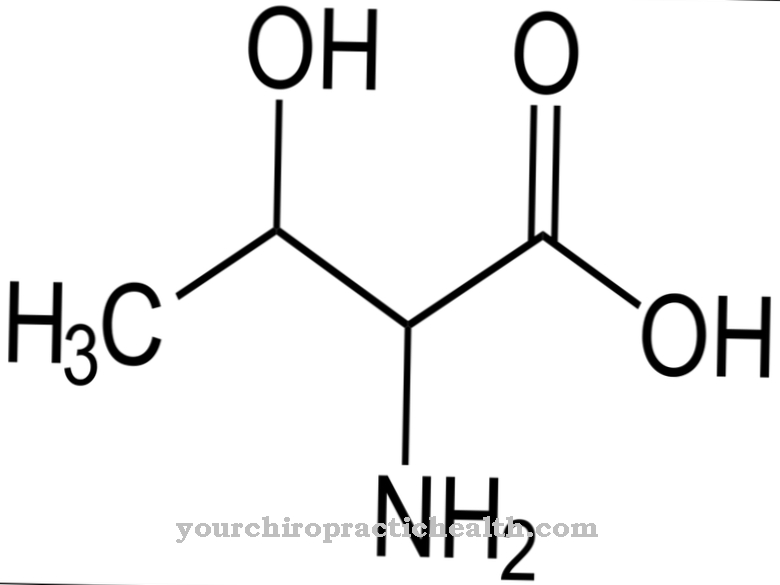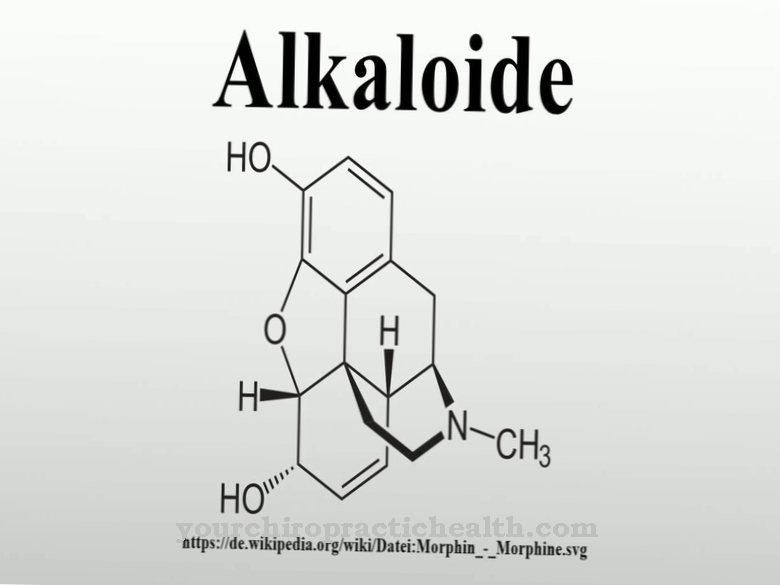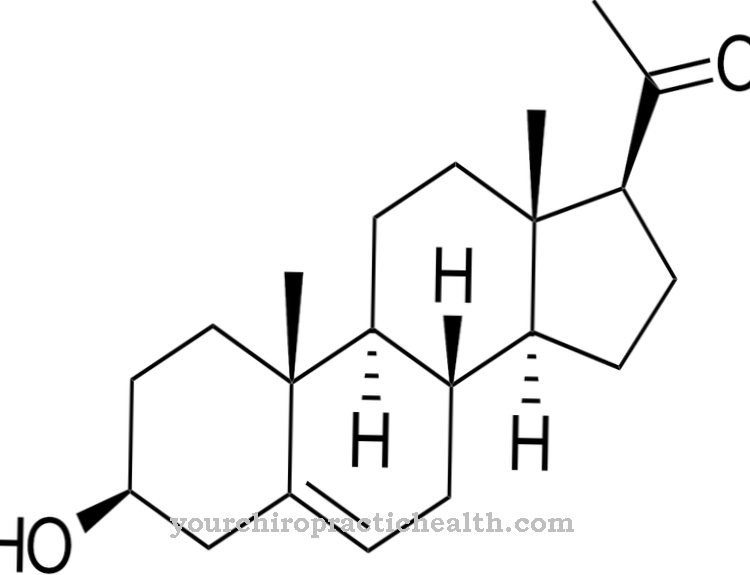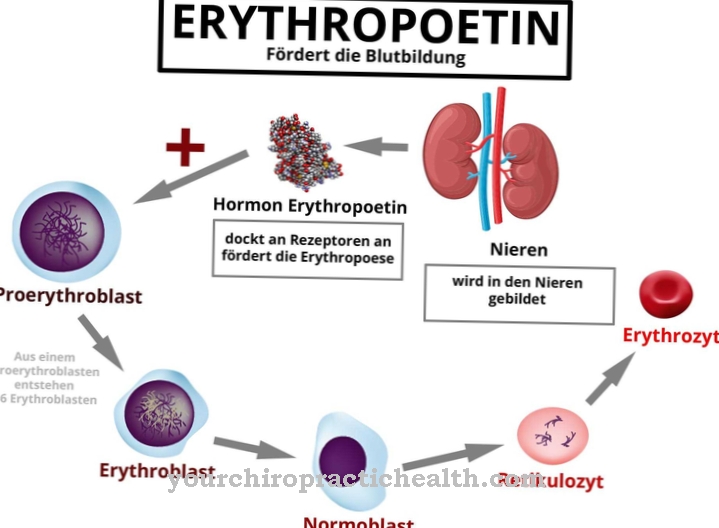As Alpha linolenic acid is called a triunsaturated fatty acid. It belongs to the group of omega-3 fatty acids.
What is Alpha Linolenic Acid?
Alpha-linolenic acid (ALA) or Linolenic acid is an omega-3 fatty acid (n-3 fatty acid), which is one of the triple unsaturated fatty acids. These are long-chain fatty acids that have several double bonds. A bond is present on the third carbon atom.
The most important representatives of the omega-3 fatty acids include alpha-linolenic acid, docosahexaenoic acid (DHA) and eicosapentaenoic acid (EPA). Alpha-linolenic acid is essential. This means that the body cannot manufacture this vital substance itself. For this reason, it must be taken with the diet. The chemical formula of linolenic acid is C18H30O2. At room temperature it forms a colorless, oily liquid.
Function, effect & tasks
In the human body, alpha-linolenic acid gives rise to eicosapentaenoic acid, which is a starting substance for the production of eicosanoids.
These, in turn, are important for numerous important body functions such as heart rate, blood pressure and muscles. They also prevent heart problems. The linolenic acid is converted by an enzyme called delta-6 desaturase. Without this enzyme, there is a risk of skin diseases such as eczema.
Linolenic acid also forms part of cell membrane lipids. The double bonds in cis configurations result in a kink within the molecular structure. The special structure creates elasticity in the cell membrane, which means that it remains supple and flexible. This is important for an optimal supply of nutrients and the removal of waste products. If the proportion of trans fatty acids or saturated fatty acids is too high, the cell membranes become rigid, which is why a good supply of nutrients and oxygen is no longer possible.
It is particularly important for the red blood cells (erythrocytes) that the membranes remain elastic. In this way, optimal flowability into the smaller blood vessels ensures a good supply of oxygen to the neighboring tissue. Therefore, a successful composition of the fatty acids of the cell membranes is of great importance for health.
Alpha-linolenic acid plays an important role in inflammatory processes in the body and in combating them. In addition, the omega-3 fatty acid is believed to be effective in treating coronary artery disease. So it has a direct influence on the cholesterol metabolism. In addition, linolenic acid plays a role in regulating blood pressure. Their anti-inflammatory effects come about by reducing the inflammation parameters cRP (c-reactive protein) and TNF (tumor necrosis factor). This in turn has a positive influence on inflammatory rheumatic diseases.
According to recent scientific findings, alpha-linolenic acid also promotes bone metabolism and reduces bone loss in old age.
Education, occurrence, properties & optimal values
Alpha-linolenic acid cannot be produced by the human body. However, it can be produced synthetically by industry. The linseed oil is the most important raw material for production.
The valuable linolenic acid is mainly found in vegetable oils. These include linseed oil with a content of 50 percent, soybean oil, rapeseed oil, walnut oil, grapeseed oil, chia oil, sunflower oil and hemp oil. The omega-3 fatty acid is also abundant in green vegetables such as Brussels sprouts, spinach, and kale. Other foods containing linolenic acid are lard, flaxseed, wheat germ, wild berries and special wild herbs.
The need for alpha-linolenic acid usually increases as a result of considerable physical stress such as competitive sports. The DGE (German Society for Nutrition) recommends an increased consumption of alpha-linolenic acid. The ideal ratio between alpha-linolenic acid and linoleic acid is 5: 1. However, the ratio in industrialized countries is usually 8: 1. Humans need around one gram of alpha-linolenic acid every day. The DGE recommends a daily intake of 0.5 percent of the energy intake that occurs per day. This corresponds to an average daily energy intake of 2000 kcal per day.
However, this amount is the absolute minimum. It therefore makes more sense to consume 1.5 grams of linolenic acid per day. Those who suffer from chronic diseases should even double or triple their intake. To prevent a heart attack, some doctors recommend a weekly omega-3 fatty acid intake of 6 grams.
Diseases & Disorders
Alpha-linolenic acid deficiency only occurs in rare cases. Possible causes of deficiency symptoms are artificial nutrition that is free from fats or permanent fat digestion disorders.
A deficiency in linolenic acid becomes noticeable through complaints such as tremors, muscle weakness, vision problems, poor wound healing and disorders of depth and surface sensitivity. In addition, those affected have limitations in their ability to learn. Babies and young children can also suffer from a deficiency in alpha-linolenic acid. This leads to visual disturbances, nerve problems and impaired growth. Since 1993, babies have also been given omega-3 fatty acids in their special diet so that they do not suffer from an undersupply in the first place.
But an excess of alpha-linolenic acid is also considered unhealthy. An excessive intake of omega-3 fatty acids increases the bleeding tendency. In the realm of possible there is also a loss of function of the immune system and leukocytes (white blood cells). For this reason, the proportion of linolenic acid should not exceed 3 percent energy.
Caution should also be exercised when taking certain medications such as anticoagulants. Due to the increased intake of omega-3 fatty acids, there is a risk of prolonged bleeding times or other negative effects on health. Furthermore, the doctor or pharmacist should be asked about possible interactions between drugs and alpha-linolenic acid in the case of regular drug use.
The therapeutic effect of omega-3 fatty acids such as linolenic acid is based on the reduction of the body's immune defense. This increases the susceptibility to infections.












.jpg)



.jpg)










.jpg)
